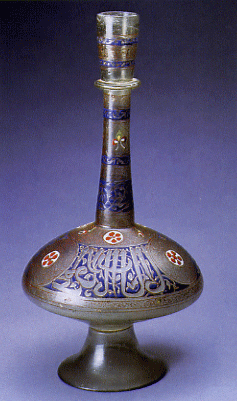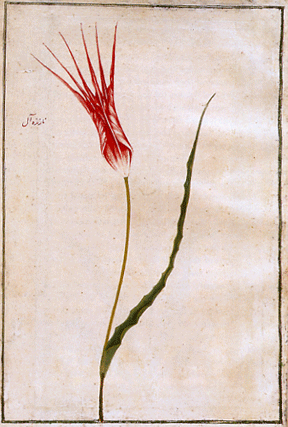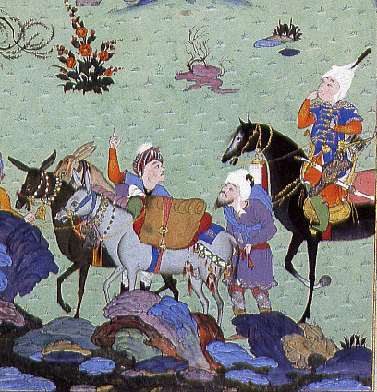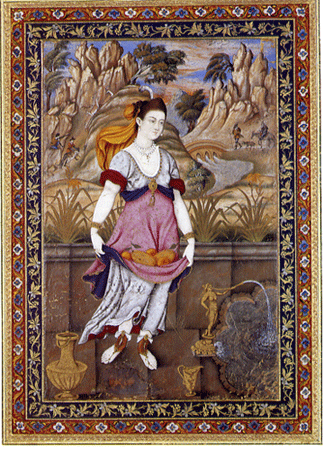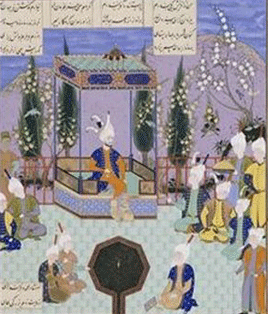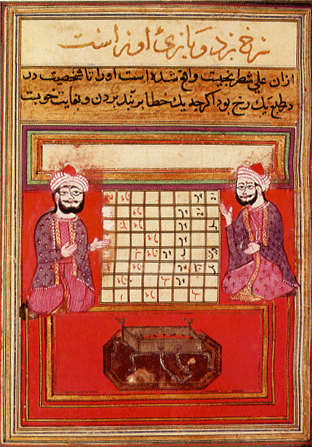
This illustration from a Persian treatise on chess, possibly dating from the 14th century, is notable for its expressive faces that hint at the “different kinds of pleasantry and jests†Mas‘udi recorded as customary among players at that time in Baghdad.
[The latest issue of Saudi Aramco World has an interesting article on the history of chess in the Middle East. Here is an excerpt.]
The Game of Kings
by Stewart Gordon
Arab writers on chess acknowledge that the game spread west from Persia, probably soon after the Islamic conquest in the mid-seventh century. The Arabic term for the game was and is shatranj, a standard linguistic shift from the Persian chatrang, and all the names of the chess pieces (with the exception of the horse) are Arabic versions of their Persian names. As it spread, however, the game did not always find itself welcome. The Eastern Church at Constantinople condemned chess as a form a gambling in 680, and al-Hakim, the Fatimid ruler of Egypt, banned it in 1005 and ordered all chess sets burned. Continue reading The Game of Kings
